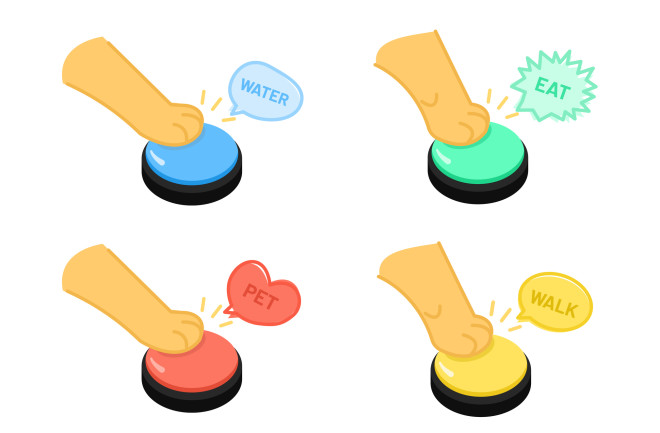Talking pets have been the darlings of social media recently. The trend started after Christina Hunger, a speech pathologist, made headlines when she adapted techniques she used with children to teach her dog, Stella, to communicate.
Stella, and now hundreds of dogs and cats, use augmentative and alternative communication (AAC) to “talk” with the humans in their lives. AAC takes the form of buttons affixed to a soundboard. When the pet presses a button, it plays a recording of a word, such as “hungry,” “outside,” “water,” or “play” — whatever has been recorded.
Viola! A talking animal! Or is it? Are these animals really using language? One scientist aims to find out.
Read More: Why Taking Your Dog On A "Sniffari" Will Tire Them Out More Than A Walk

